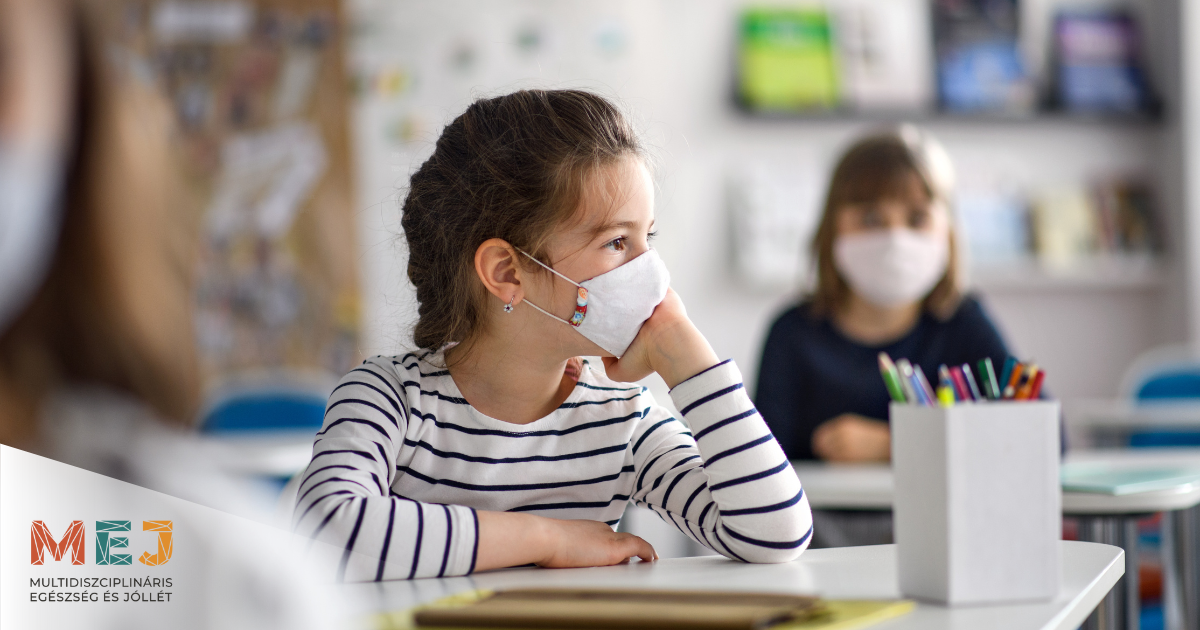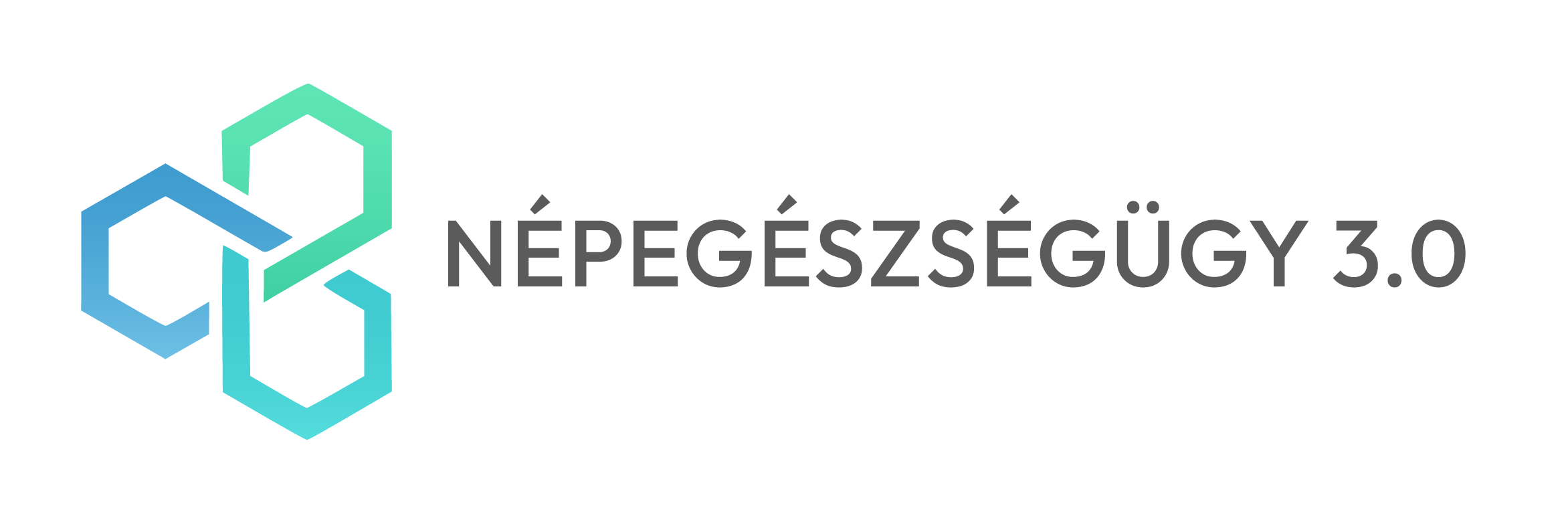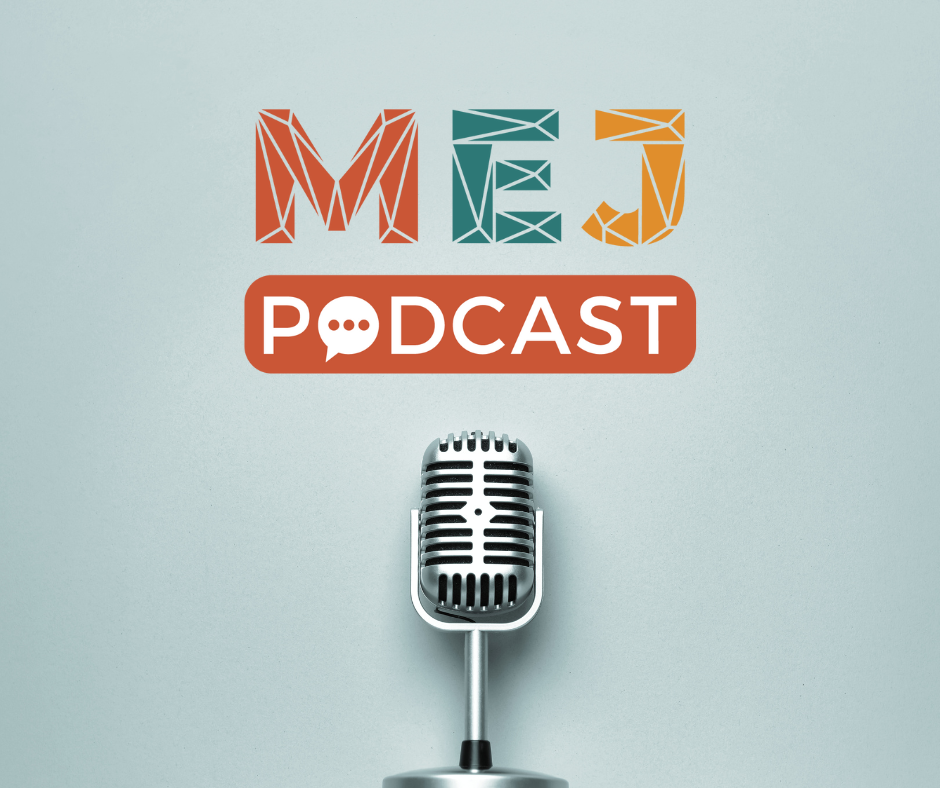A Covid-19 járvány hatása iskoláskorúak lelki és társas jóllét mutatóira
Absztrakt
BEVEZETÉS: A Covid-19 világjárvány alatt gyűjtött kvantitatív és kvalitatív adatok szerint a fiatalok mentális egészsége kedvezőtlen irányba változott a pandémia időszakában. Ezen belül is még kedvezőtlenebb mentális egészségmutatókról számoltak be az idősebb serdülők, a lányok, a kevésbé jómódú és/vagy a krónikus (mentális) betegséggel élő gyermekek.
MÓDSZERTAN: Az Iskoláskorú Gyermekek Egészségmagatartása nemzetközi hátterű kutatás országosan reprezentatív, négy évente ismétlődő adatfelvételein végeztük elemzéseinket. A Covid-19 járvány hatásait leíró statisztika alapján szemléltetjük az 5–9. évfolyamosok körében a 2022-es adatok felhasználásával (N = 4 738). Mindemellett a lelki és társas jóllét egyes változóit hasonlítjuk össze 2018 és 2022 között korcsoportos bontásban, illetve bemutatjuk a változók időbeli trendjeit nemi bontásban is.
EREDMÉNYEK: A legtöbb tanuló (42,7–49,7%) úgy nyilatkozott, hogy a Covid-19 járvány semleges hatást gyakorolt az egész életére, az egészségére, a mentális egészségére, valamint családi és baráti kapcsolataira. Ugyanakkor azok aránya, akik szerint a pandémia nagyrészt negatív következményekkel járt, nagyobb (28,2–36,7%), mint azok aránya, akik pozitívnak ítélték meg az érzékelt hatásokat (15,8–27,2%). A járvány után a fiatalok alacsonyabb élettel való elégedettségről számoltak be, kevesebben értékelték egészségüket kitűnőnek, családjuk és barátaik támogatását magasnak, többen tapasztaltak intenzívebb pszichoszomatikus tüneteket a későbbi adatfelvétel alkalmával. A lányok és az idősebb serdülők (a 9. évfolyamra járók) kedvezőtlenebb mentális egészségmutatókkal jellemezhetők.
KÖVETKEZTETÉSEK: Annak ellenére, hogy a pandémiás válság önmagában lehetőséget nyújtott a személyes növekedés és a családi összetartás lehetőségeinek átélésére, a hazai fiatalok esetében az észlelt hátrányok meghaladták ezeket a potenciális előnyöket. Az eredmények mindenképpen arra utalnak, hogy szükséges a hazai gyermek és serdülő mentális egészségügyi szolgáltatások erősítés (pl. távpszichiátria a telemedicina eszközeivel), rendszeres adatgyűjtések végzése, átfogó egészségfejlesztési programok fejlesztése és bevezetése, valamint mindennek keretet adó széleskörű, korosztályos (mentális) egészségstratégia kidolgozása.
Hivatkozások
Aknin, L. B., Andretti, B., Goldszmidt, R., Helliwell, J. F., Petherick, A., De Neve J-E., Dunn, E. W., Fancourt, D., Goldberg, E., Jones, S. P., Karadag, O., Karam, E., Layard, R., Saxena, S., Thornton, E., Whillans, A., & Zaki, J. (2022). Policy stringency and mental health during the COVID-19 pandemic: a longitudinal analysis of data from 15 countries. Lancet Public Health, 7:e417–e426.
Babusa, B., Túry, F., & Pászthy, B. (2022) Az anorexia nervosa gyakoriságának növekedése a COVID-19 pandémia idején – A családi háttér lehetséges szerepe, Orvosképzés, 97,2: 372-377.
Bhatia, A., Fabbri, C., Cerna-Turoff, I., Turner, E., Lokot, M. et al. (2021). Violence against children during the COVID-19 pandemic. Bulletin of the World Health Organization, 99 (10), 730-738. World Health Organization. http://dx.doi.org/10.2471/BLT.20.283051
Boer, M., Van Den Eijnden, R. J., Boniel-Nissim, M., Wong, S. L., Inchley, J. C., Badura, P. et al. (2020). Adolescents’ intense and problematic social media use and their well-being in 29 countries. Journal of Adolescent Health. 66(6):S89–99. doi: 10.1016/j.jadohealth.2020.02.014.
Bronfenbrenner, U. (1979). The ecology of human development. Harvard University Press.
Cantril, H. (1965). The pattern of human concern. Rutgers University Press.
Chang, L. C. (2011), Health literacy, self-reported status and health promoting behaviours for adolescents in Tai-wan. Journal of Clinical Nursing, 20: 190-196. https://doi.org/10.1111/j.1365-2702.2009.03181.x
Clemente-Suárez, V. J., Navarro-Jiménez, E., Moreno-Luna, L., Saavedra-Serrano, M. C., Jimenez, M., Simón, J.A., & Tornero-Aguilera, J.F. (2021). The Impact of the COVID-19 Pandemic on Social, Health, and Economy. Sustainability, 13, 6314. https://doi.org/10.3390/su13116314
Coker, T. R., Cheng, T. L., & Ybarra, M. (2023). Addressing the Long-term Effects of the COVID-19 Pandemic on Children and Families: A Report From the National Academies of Sciences, Engineering, and Medicine. JA-MA. 329(13):1055–1056. doi: 10.1001/jama.2023.4371
Cosma, A., Abdrakhmanova, S., Taut, D., Schrijvers, K., Catunda, C., & Schnohr, C. (2023a). A focus on adolescent mental health and well- being in Europe, central Asia and Canada. Health Behaviour in School-aged Chil-dren international report from the 2021/2022 survey. Volume 1. Copenhagen: WHO Regional Office for Eu-rope; 2023. Licence: CC BY-NC-SA 3.0 IGO.
Cosma, A., Stevens, G., Martin, G., Duinhof, E. L., Walsh, S. D., Garcia-Moya, I. et al. (2020) Cross-national time trends in adolescent mental well-being from 2002 to 2018 and the explanatory role of schoolwork pressure. Jour-nal of Adolescence Health, 66(6): S50–8. doi: 10.1016/j.jadohealth.2020.02.010
COVID-19 Mental Disorders Collaborators (2021). Global prevalence and burden of depressive and anxiety disor-ders in 204 countries and territories in 2020 due to the COVID-19 pandemic. Lancet, 398(10312):1700-1712. doi: 10.1016/S0140-6736(21)02143-7.
Currie, C., Inchley, J., Molcho, M., Lenzi, M., Veselska, Z. & Wild, F. (eds.) (2014). Health Behaviour in School-aged Children (HBSC) Study Protocol: Background, Methodology and Mandatory items for the 2013/14 Survey. St Andrews: CAHRU. http://www.hbsc.org
Daly, M., Sutin, A. R., & Robinson, E. (2021). Depression reported by US adults in 2017–2018 and March and April 2020. Journal of Affective Disorders, 278:131–135. https://doi.org/10.1016/j.jad.2020.09.065
Fegert, J. M., Vitiello, B., Plener, P. L. & Clemes, V. (2020). Challenges and burden of the Coronavirus 2019 (COVID-19) pandemic for child and adolescent mental health: a narrative review to highlight clinical and research needs in the acute phase and the long return to normality. Child and Adolescent Psychiatry and Mental Health, 14:1–11. https://doi.org/10.1186/s13034-020-00329-3
Di Gennaro, F., Belati, A., Tulone, O., Diella, L., Fiore Bavaro, D., Bonica, R., Genna, V., Smith, L., Trott, M., Bruyere, O., Mirarchi, L., Cusumano, C., Dominguez, L. J., Saracino, A., Veronese, N., & Barbagallo, M. (2023). Incidence of long COVID-19 in people with previous SARS-Cov2 infection: a systematic review and meta-analysis of 120,970 patients. Internal and Emergency Medicine, 18(5):1573-1581. doi: 10.1007/s11739-022-03164-w.
Goldmann, E. & Galea, S. (2014) Mental health consequences of disasters. Annual Review of Public Health, 35:169–183. https://doi.org/10.1146/annurev-publhealth-032013-182435
Haig-Ferguson, A., Cooper, K., Cartwright, E., Loades, M., & Daniels, J. (2021). Practitioner review: Health anxiety in children and young people in the context of the COVID-19 pandemic. Behavioural and Cognitive Psycho-therapy, 49(2), 129–143. doi: 10.1017/S1352465820000636
Hoffman, J. A. & Miller, E. A. (2020), Addressing the Consequences of School Closure Due to COVID-19 on Chil-dren's Physical and Mental Well-Being. World Medical & Health Policy, 12: 300-310. https://doi.org/10.1002/wmh3.365
Inchley, J., Currie, D., Piper, A., Jåstad, A., Cosma, A., Nic Gabhainn, S. & Samdal, O. (Eds.) (2022) Health Behaviour in School-aged Children (HBSC) Study Protocol: Background, Methodology, mandatory questions and op-tional packages for the 2021/22 survey. MRC/CSO Social and Public Health Sciences Unit, The University of Glasgow.
Inchley, J, Currie, D., Cosma, A. & Samdal, O. (Eds). (2018) Health Behaviour in School-aged Children (HBSC) Study Protocol: background, methodology and mandatory items for the 2017/18 survey. St Andrews: CAHRU.
Kauhanen, L., Wan Mohd Yunus, W., Lempinen, L. et al. (2023). A systematic review of the mental health changes of children and young people before and during the COVID-19 pandemic. European Child and Adolescent Psy-chiatry, 32, 995–1013. https://doi.org/10.1007/s00787-022-02060-0
Lannert, J. & Varga, J. (2022): Public Education. In: Mátyás, L. (ed.): Emerging European economies after the pan-demic. Struck in the middle income trap?, 465–514. Springer.
Lazarus, R. S. & Folkman, S. (1987). Transactional theory and research on emotions and coping. European Journal of Personality, 1: 141–169. https://doi.org/10.1002/per.2410010304
Li, C., Wang, P., Martin-Moratinos, M., Bella-Fernández, M., & Blasco-Fontecilla, H. (2022). Traditional bullying and cyberbullying in the digital age and its associated mental health problems in children and adolescents: a meta-analysis. European Child Adolescent Psychiatry. doi:10.1007/s00787-022-02128-x
Martin, G., Reilly, K., Everitt, H. & Gilliland, J.A. (2022). Review: The impact of climate change awareness on chil-dren's mental well-being and negative emotions – a scoping review. Child and Adolescent Mental Health, 27: 59-72. https://doi.org/10.1111/camh.12525
Ng, K., Cosma, A., Svacina, K., Boniel-Nissim, M., & Badura, P. (2021). Czech adolescents’ remote school and health experiences during the spring 2020 COVID-19 lockdown. Preventive Medicine Reports, 1;22:101386. doi: 10.1016/j. pmedr.2021.101386
Nearchou, F., Flinn, C., Niland, R., Subramaniam, S. S., & Hennessy, E. (2020). Exploring the impact of COVID-19 on mental health outcomes in children and adolescents: a systematic review. International Journal of Envi-ronmental Research and Public Health, 17(22):8479, doi: 10.3390/ijerph17228479.
Németh Á. (2007). Serdülőkorú fiatalok egészsége és életmódja. Országos Egészségfejlesztési Intézet, Budapest
Németh Á., & Költő A. (2011). Serdülőkorú fiatalok egészsége és életmódja. Országos Gyermekegészségügyi Intézet, Budapest.
Németh Á., & Költő A. (2016). Egészség és egészségmagatartás iskoláskorban, Nemzeti Egészségfejlesztési Intézet, Budapest.
Németh Á., & Várnai D. (2019). Kamaszéletmód Magyarországon, L’Harmattan, Budapest.
Paksi, B. (2019). Magyarországi tendenciák az iskolai prevenció területén, Edukáció, 28 (3), 441–458.
Papp-Zipernovszky, O., Kékesi, M.Z. & Jámbori, Sz. (2017) A Multidimenzionális Észlelt Társas Támogatás Kérdőív magyar nyelvű validálása. Mentálhigiéné és Pszichoszomatika, 18 (3). 230–262.
Patchin, J. W., & Hinduja, S. (2023). Cyberbullying among meri merican youth before and during the COVID-19 Pandemic. Journal of School Health, 93: 82-87. doi: 10.1111/josh.13249
Pentaris, P. (Ed). (2021). Death, Grief and Loss in the Context of COVID-19. Routledge, New York.
Ravens-Sieberer, U., Kaman, A., Erhart, M., Devine, J., Schlack, R., & Otto, C. (2021). Impact of the COVID-19 pan-demic on quality of life and mental health in children and adolescents in Germany. European Journal of Child and Adolescent Psychiatry, 31:879–889. https://doi.org/10.1007/s00787-021-01726-5
Residori, C., Költő, A., Várnai, D. E. & Nic Gabhainn, S. (2023). Age, gender and class: how the COVID-19 pandemic affected school-aged children in the WHO European Region: impact of the COVID-19 pandemic on young people’s health and well-being from the findings of the HBSC survey round 2021/2022. World Health Organ-ization. Regional Office for Europe. https://apps.who.int/iris/handle/10665/369715. License: CC BY-NC-SA 3.0 IGO.
Richardson, D., Otchere, F., & Musatti A. (2022). The impact of the war in Ukraine and subsequent economic down-turn on child poverty in eastern Europe and central Asia. Florence: UNICEF Innocenti – Global Office of Re-search and Foresight. https://www.unicef-irc.org/publications/1663-the-impact-of-the-war-in-ukraine-and-subsequent-economic-downturn-on-child-poverty-in-eastern-europe-and-central-asia.html
Rogers, S. L., & Cruickshank, T. (2021) .Change in mental health, physical health, and social relationships during highly restrictive lockdown in the COVID-19 pandemic: evidence from Australia. PeerJ, 22; 9:e11767. doi: 10.7717/peerj.11767.
Satici, S. A., Gocet Tekin, E., Deniz, M. E., & Satici, B. (2023) Doomscrolling Scale: its Association with Personality Traits, Psychological Distress, Social Media Use, and Wellbeing. Applied Research in Quality of Life, 18(2):833-847. doi: 10.1007/s11482-022-10110-7.
Skogen, J. C., Hjetland, G. J., Bøe, T., Hella, R. T., & Knudsen, A. K. (2021). Through the Looking Glass of Social Media. Focus on Self-Presentation and Association with Mental Health and Quality of Life. A Cross-Sectional Sur-vey-Based Study. International Journal of Environmental Research and Public Health, 23;18(6):3319. doi: 10.3390/ijerph18063319.
Szentivanyi, D., Horváth, L. O., Buist, K., Farkas, B., Dallos, G., Garas, P., Győri, D., J. & Balazs, J. (2022). Coronavirus Pandemic - #STAYHOME: How Are You Holding Up? Questions And Tips For 11–18 Year Olds To Make It Better, European Psychiatry, 307.
Tarantino, S., Graziano, S., Carducci, C., Giampaolo, R., & Grimaldi Capitello, T. (2022). Cognitive difficulties, psycho-logical symptoms, and long lasting somatic complaints in adolescents with previous SARS-CoV-2 infection: a telehealth cross-sectional pilot study. Brain Sciences, 12(8):969. doi: 10.3390/brainsci12080969
UNICEF Magyarország (2021). Kutatási eredmény: a magyar szülők fele szerint romlott a gyerekek mentális egészsége a járvány alatt. https://unicef.hu/igy-segitunk/hireink/kutatasi-eredmeny-a-magyar-szulok-fele-szerint-romlott-a-gyerekek-mentalis-egeszsege-a-jarvany-alatt
Whitehead, R. D., Cosma, A., Cecil, J., Currie, C., Currie, D., Neville F et al. (2022). Trends in the perceived body size of adolescent males and females in Scotland, 1990–2014: changing associations with mental well-being. In-ternational Journal of Public Health, 63(1):69–80. doi: 10.1007/s00038-017-0997-y.6
Wong, B. H., Cross, S., Zavaleta-Ramírez, P., Bauda, I., Hoffman, P., Ibeziako, P., Nussbaum, L., Berger, G. E., et al. (2023). Self-Harm in Children and Adolescents Who Presented at Emergency Units During the COVID-19 Pandemic: An International Retrospective Cohort Study. Journal of American Academy of Child and Ado-lescent Psychiatry. 62(9):998-1009. doi: 10.1016/j.jaac.2022.11.016.
World Health Organization (WHO) (2020): The impact of COVID-19 on mental, neurological and substance use ser-vices: results of a rapid assessment. Geneva, World Health Organization. https://www.who.int/publications/i/item/978924012455
World Health Organization (WHO) (2023a). Statement on the fifteenth meeting of the IHR (2005) Emergency Committee on the COVID-19 pandemic. https://www.who.int/news/item/05-05-2023-statement-on-the-fifteenth-meeting-of-the-international-health-regulations-(2005)-emergency-committee-regarding-the-coronavirus-disease-(covid-19)-pandemic
World Health Organization (WHO) (2023b). Coronavirus Dashboard. https://covid19.who.int/region/euro/country/hu
YoungMinds (2021). Covid impact on young people with mental health needs. https://www.youngminds.org.uk/about-us/reports-and-impact/coronavirus-impact-on-young-people-with-mental-health-needs/
Yue, Y., Li, L., Liu, R., Zhang, Y., Zhang, S., Sang, H., Tang, M., Zou, T., Shah, S.M., Shen, X., Chen, J., Wu, A., Jiang, W., & Yuan, Y. (2023). The dynamic changes of psychosomatic symptoms in three waves of COVID-19 out-break and fatigue caused by enduring pandemic in China. Journal of Affective Disorders, 15;331:17-24. doi: 10.1016/j.jad.2023.03.032.












